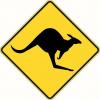A while back, mention of a video showing what happens on a microscopic level when planing was made here. One barrier to watching this video was that it is Japanese. Or at least it's a barrier to me, since I don't know Japanese.
Using a translation of the audio and titles from this video by Mia Iwasaki, I added subtitles to the Kawai and Kato video. The subtitles I added were based on Mia's translation. I did revise her translation a bit taking into account terminology that woodworkers (American woodworkers, at least) would use. I tried to match the translation to the audio as best as I could. If anyone who actually knows Japanese catches any mistakes, please let me know. I can make edits and reupload the video.
But at least there's a subtitled version of the video now.
Thanks to Mia, Bill Tindall, and Professors Kawai and Kato for their generosity and work.
You can watch the video here.
Enjoy!





 Reply With Quote
Reply With Quote





